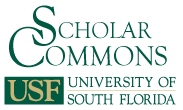Keywords
Quantitative Literacy (QL), word problems, calculus.
Abstract
Even though Quantitative Literacy (QL) programs are currently being developed and implemented in several colleges and universities, most schools still depend on traditional mathematics courses to reach their quantitative literacy goals. This note is a case study of how a traditional mathematics course sequence intended for students majoring in social and life sciences may be modified and adapted to at least partially fulfill the need in the absence of a stand-alone QL program. In particular, we focus on a freshman-level mathematics course sequence that serves various client departments. This sequence covers the traditional content of a first-year calculus sequence along with a clear and intentional emphasis on word problems. The kinds of word problems used are not necessarily limited to those that require or make substantial use of a calculus background. However in this perspective we propose that various levels of word problems may be used successfully to satisfy QL goals. Descriptions of QL mainly focus on going from the mathematical data and presentations to an understanding of the real world. In this note we surmise that word problems go in the opposite direction and, in some sense, close the loop in QL.
DOI
http://dx.doi.org/10.5038/1936-4660.1.2.6
Recommended Citation
Karaali, Gizem. "Word Problems: Reflections on Embedding Quantitative Literacy in a Calculus Course." Numeracy 1, Iss. 2 (2008): Article 6. DOI: http://dx.doi.org/10.5038/1936-4660.1.2.6
Creative Commons License

This work is licensed under a Creative Commons Attribution-Noncommercial 4.0 License

